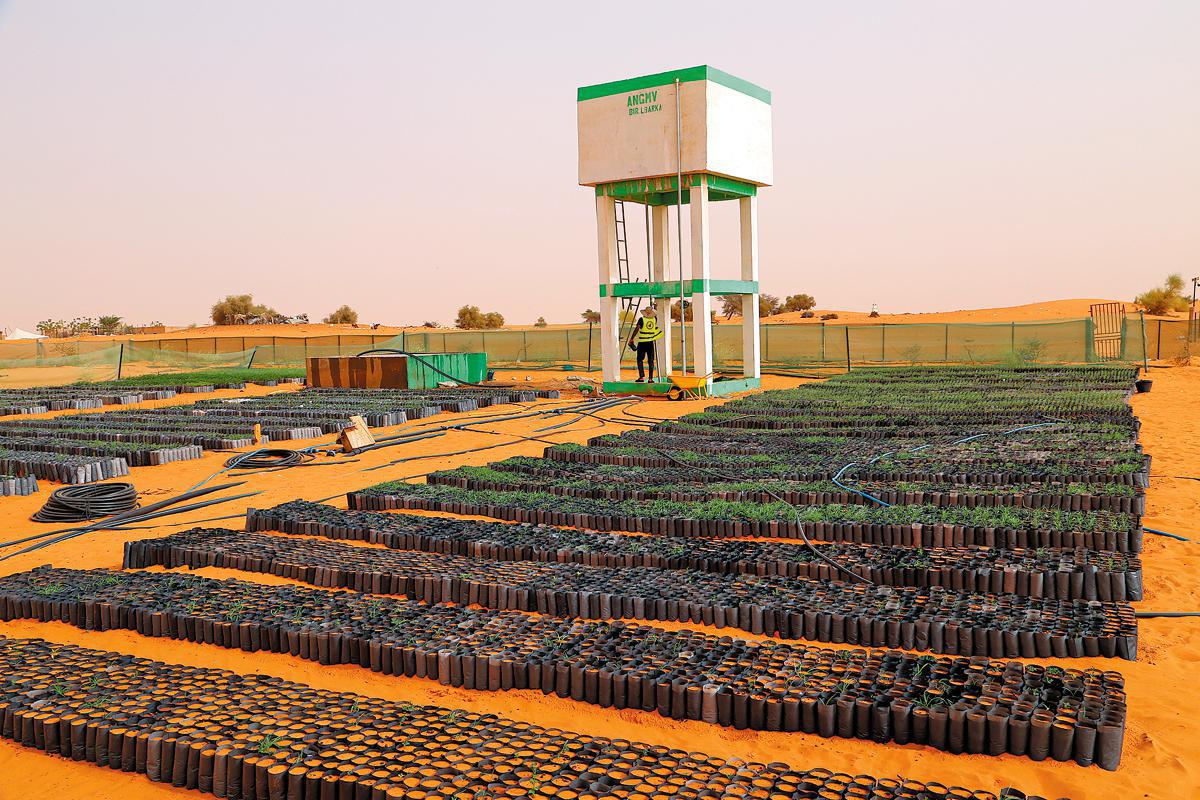China helping Africa green its deserts


URUMQI — Scientists from Northwest China's Xinjiang Uygur autonomous region are working to help African countries transform their sandy regions into greener, arable land with more trees and productive agricultural practices.
By leveraging smart technologies, indigenous Chinese expertise and a dual commitment to sand control and economic growth, they aim to establish sustainable ecosystems in these regions that have long suffered from desertification, known as "the cancer of Earth".
Noting that desertification is a shared global challenge, Lei Jiaqiang, a lead researcher at the Xinjiang Institute of Ecology and Geography of the Chinese Academy of Sciences, said collaborative efforts are crucial. Over the past decades, Lei and his colleagues have gained extensive experience in tackling desertification in Northwest China and shared them with African countries.
Their efforts are gaining increased attention and are expected to yield fruitful outcomes.
Driven by skills
Although the effects of desertification — such as biodiversity loss, low land productivity and disrupted transportation — are similar worldwide, scientists admit that the climate challenges faced by tropical African countries are greater as plants in these countries must endure year-round heat.
Mauritania, situated along the Atlantic coast, is one such country, with nearly three-quarters of its territory engulfed by the Sahara Desert.
Lei still vividly remembered his first visit to the country's capital, Nouakchott, more than a decade ago. The streets were lined with piles of sand, and the sidewalks, railways and houses were engulfed by shifting dunes.
After extensive research and testing, Chinese scientists implemented a range of effective measures to reverse the situation. They introduced a diverse array of plant species from China, deployed straw checkerboard sand barriers and applied their homegrown water-saving irrigation technologies.
Smart technologies such as agricultural robots, drones and sand-blocking systems powered by solar panels have been introduced by Chinese research institutes and enterprises to help boost efficiency.
These approaches are rooted in China's extensive experience in combating desertification. As one of the world's most severely affected countries, China has 2.57 million square kilometers of land, or about 26.8 percent of its total area, impacted by desertification.
Xinjiang has long stood at the forefront of China's fight against desertification. Home to the Taklimakan Desert — China's largest and the world's second-largest drifting desert — the region has seen nearby communities grapple with frequent wind and sandstorms.
It captured global attention last November when China completed a 3,046 km greenbelt of trees and sand-blocking technologies, fully encircling the desert.
Over the past decades, China has expanded its afforestation area by 32 million hectares under an afforestation program and restored 53 percent of its treatable desertified land. It has also achieved the UN 2030 Sustainable Development Goal of zero growth in land degradation a decade in advance.





































